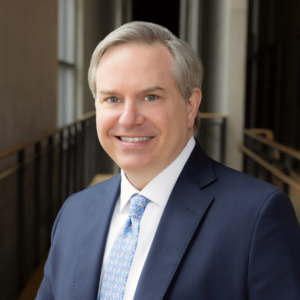My father is a retired orthopedic surgeon. I’ve witnessed his personal retirement journey and know that closing the book on a successful practice can feel both daunting and exciting. But before you begin that last chapter, you must first define your goals and set yourself up to meet them.
There are several steps a physician should consider in building an exit plan: Practice Assessment and Valuation; Pinpointing Late Career and Retirement Goals; and finally, Customizing Your Plan. More than anything, make a plan. The most common struggle among our physician clients is to take action, because they become paralyzed by the complicated question of “when” to retire.
Practice assessment and valuation means realistically evaluating the current state of your practice and understanding your practice’s financial value. The valuation process requires you to recognize and identify your revenue streams, how they differ (professional services vs. ancillary services), and how they contribute to your bottom line. Additionally, during the practice assessment process, it’s important to assess your practice’s legal health. Even economically successful practices can be impacted by compliance issues. Recognize ahead of time if your legal model is helping or hurting your practice and make changes accordingly. You will also want to evaluate your practice from a cultural perspective. If a perspective buyer will inherit your team, it is important to be realistic as to whether there are dysfunction issues or overpaid staff that commonly result from long time employment with a practice.
Ultimately, a successful valuation of your practice results from years of fostering goodwill with your patients. Practice Goodwill relates to your practice’s ability to continue to generate earnings without the presence of any particular physician. If you want to eventually be in a position to sell, you must brand and run your practice as an enterprise. Patients must be seen as transferrable to the buying physician and creating Practice Goodwill helps ensure that.
Next, it’s time to determine your retirement goals and late career objectives. Think about your legacy and the impact you’d like to leave. Think about if you’d like to retire in stages (surgery first, cutting hours, etc.). Based on those intentions, we can help customize a plan that sets you up for success.
While there are many exit strategies, the four most common plans we see in our firm are:
The Fixer-Upper Plan:
This plan is all about repurposing your practice to fit your late career goals and retirement timeline. Basically, it requires some legal restructuring. For example, under this plan we’ve had clients develop separate entities as cost centers under a single legal model. This remodeling allows each entity to operate more independently, but still develop a value under a single legal model.
The Sensei Plan:
You, the Sensei, will teach them, the Student. This plan follows the standard concept of bringing on an associate, training them as a partner, and prepping them to take the reins in a buyout. Under this model, it is extremely important that the Sensei and Student develop the 4 C’s: cost, control, contingencies, and compensation. Without mapping these elements, it often leads to unmet expectations from both parties.
The Old School Plan:
For many clients, the retirement timeline is more compressed. Once they decide it’s time, the process to stop practicing moves forward in months, as opposed to years. Historically, these late practice sales have often ended in less value, but that is not always the case. We have worked with clients on creative solutions to retire on a shorter horizon, while still capturing full and fair value for their practice.
The Drop the Mic Plan:
This is your show and you draw the curtains the way you want, when you want. This exit requires you to position the practice – financially, legally and operationally – in a way that allows you to walk away on your own terms. Here, we help leverage offers to optimize your end game.
The last bit of advice I offer is from my father: once you retire, keep yourself busy. No matter your exit plan.
If you have any questions or would like to discuss retirement planning, schedule a consult at info@byrdadatto.com.
